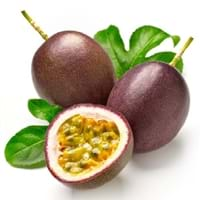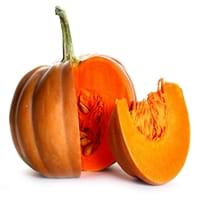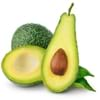Health Benefits
Asthma treatment, Heart care, Regulates Blood Sugar, Muscle pain relief, Reduces nervous tension
Arthritis treatment, Cancer prevention, High Cholesterol Regulation, Lower blood pressure, Helps Prevent cataract, Prevents gall stones, Ulcer treatment, Weight loss properties
General Benefits
Boosts immune system, Controls blood pressure, Digestive aid, Fights against infections, Helps in weight loss
Boosts respiratory health, Eliminate parasites and infections, Protects against birth defects, Strengthens bones
Skin Benefits
Anti-aging benefits, Skin revitalization
Heals sunburn, Hydrates skin, Skin rejuvenation
Hair Benefits
Protects hair
Regulates hair growth
Allergy Symptoms
Anaphylaxis, Breathing difficulty, Decrease in blood pressure, Dizziness, Skin rash, Swelling of face, Swelling of mouth, tongue or lips
Abdominal cramps, Anaphylaxis, Digestive Problems, Dizziness, Eczema, Fainting, Hives, Inflammation, Itching, Tingling sensation in wrist and face, Vomiting, Wheezing
Side Effects
Stressed heart, Nausea, Vomiting, Possibly unsafe during pregnancy
Kidney and gallbladder diseases
Best Time to Eat
As a snack in the late afternoon, Don't consume at night and before bed, Morning time (before lunch), Strictly avoid empty stomach
Along with meal, Don't eat after meal, Morning time (before lunch)
Vitamin B5 (Pantothenic Acid)
Not Available
Vitamin C (Ascorbic Acid)
Vitamin K (Phyllochinone)
Phytosterol
Not Available
Calories in Fresh Fruit with Peel
Not Available
Calories in Fresh Fruit without Peel
Calories in Frozen Form
Not Available
Not Available
Calories in Dried Form
Not Available
Season
All seasons
All seasons
Varieties
Australian Purple, Common Purple, Kapoho Selection, Pratt Hybrid, University Selection No. B-74, Waimanalo Selection and Yee Selection
Jarrahdale, Peanut, Lakota, Cow, Sugar, Caribean, Red kuri, Buttercup and Pink lady
Color
Purple, Yellow
Blue, Green, Orange, Red, White
Inside Color
Yellow
Creamy Yellow
Taste
Sweet, Tart
Creamy, Soft, Sweet
Origin
Argentina, Brazil, Paraguay
Mexico
Grows on
Not Available
Vines
Soil Type
Sandy loam
Clay loam, Sandy loam, Well-drained
Climatic Conditions
Frost free, Sunny, Warm
Warm to hot climate
Facts about
- Passion fruit tree can grow up to 20 feet in a year.
- More than 200 species of passion fruit are found near Amazon river.
- Oil extracted from its seeds is used in various cosmetics.
- The name pumpkin has its roots in the Greek word ‘pepon’, meaning ‘large melon’.
- The largest pumpkin ever grown weighed 1,140 pounds.
- Pumpkins were once known for removing freckles & curing snake bites.
Top Producer
Brazil
China
Other Countries
Colombia, Ecuador, Indonesia, Kenya, Peru
Egypt, India, Indonesia, Iran, Italy, Mexico, Russia, Spain, United States of America
Top Importer
Brazil
United States of America
Top Exporter
Ecuador
China
Botanical Name
Passiflora edulis
Cucurbita maxima
Synonym
Passiflora edulis f. edulis or Passiflora edulis f. flavicarpa
Cucurbita pepo, Squash
Subkingdom
Tracheobionta
Tracheobionta
Division
Magnoliophyta
Magnoliophyta
Class
Magnoliopsida
Magnoliopsida
Subclass
Dillenhidae
Dillenhidae
Order
Malpighiales
Cucurbitales
Family
Passifloraceae
Cucurbitaceae
Genus
Passiflora
Cucurbita
Species
P. edulis
Cucurbita mixta
Generic Group
Passion Flower
Not Available
Compare Passionfruit and Pumpkin
It is important compare Passionfruit and Pumpkin as both the fruits have a different nutritional value. Their comparison can be done on the basis of their vitamin and mineral content, calories, benefits as well as characteristics, making it easier for us to choose the best fruit for our diet. Their general health benefits are as follows:
Passionfruit Benefits: boosts immune system, controls blood pressure, digestive aid, fights against infections and helps in weight loss.
Pumpkin Benefits: boosts respiratory health, eliminate parasites and infections, protects against birth defects and strengthens bones.
Fruits are also used as a remedy for various hair problems. The hair benefits of Passionfruit are: protects hair and hair benefits of Pumpkin are: regulates hair growth. Some fruits are known to cause allergic reactions. The allergy symptoms of first fruit are: anaphylaxis, breathing difficulty, decrease in blood pressure, dizziness, skin rash, swelling of face and swelling of mouth, tongue or lips and the symptoms of second fruit are: abdominal cramps, anaphylaxis, digestive problems, dizziness, eczema, fainting, hives, inflammation, itching, tingling sensation in wrist and face, vomiting and wheezing. Get sorted Passionfruit vs Pumpkin comparison with the help of fruit comparison tool by fruitvs.com.









